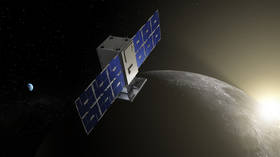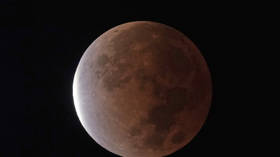NASA loses touch with Moon probe

The probe testing an orbital approach for the Artemis Moon program experienced a communication problem within a day of leaving the low Earth orbit, the US space agency said on Tuesday. NASA engineers are hopeful they can fix whatever caused the CAPSTONE probe to lose contact and rescue the mission considered crucial for returning to the Moon.
The Cislunar Autonomous Positioning System Technology Operations and Navigation Experiment (CAPSTONE) probe “experienced communications issues while in contact with the Deep Space Network,” NASA spokesperson Sarah Frazier said on Tuesday.
The spacecraft team is “working to understand the cause and re-establish contact,” Frazier said, adding that they have “good trajectory data” based on CAPSTONE’s previous contacts with the network. Frazier added that the probe “has enough fuel to delay the initial post separation trajectory correction maneuver for several days,” if necessary.
The $32 million probe that weighs about 25 kilograms (55 pounds) was launched from New Zealand on June 28. The mission seemed to be going well as late as Monday, when CAPSTONE was boosted from the Earth’s orbit and into a ballistic lunar transfer trajectory.
NASA’s plan was to use CAPSTONE as a pathfinder for Gateway, a Moon-orbiting waystation for the Artemis program to land humans onto the lunar surface for the first time in decades. The near rectilinear halo orbit (NRHO) is located at the precise balance point between the Earth and lunar gravities and requires “minimal energy to maintain,” and offers an unobstructed line of sight with the Earth.
The orbit’s proximity to the lunar surface at times also means a spacecraft flying to and from the Moon will need less fuel, making it “an ideal staging area for missions to the Moon and beyond,” according to the US space agency. CAPSTONE was supposed to “demonstrate the reliability of innovative spacecraft-to-spacecraft navigation solutions as well as communication capabilities with Earth.”
Originally intended to land a human crew on the Moon by 2024, the Artemis program has been delayed due to lack of funding. NASA is still pursuing it, with an eye on landing the “first woman and first person of color” on the Moon eventually. Administrator Bill Nelson, a former Democrat senator from Florida, recently argued that the US must get to the Moon before China, so as to stop Beijing from claiming and weaponizing the Earth’s natural satellite.














